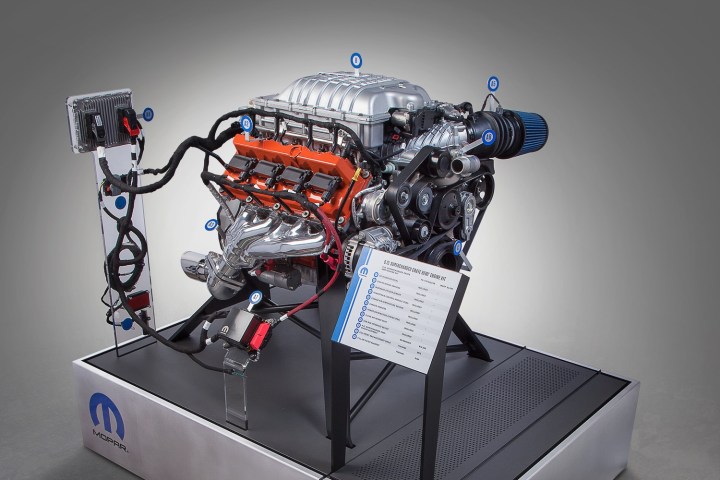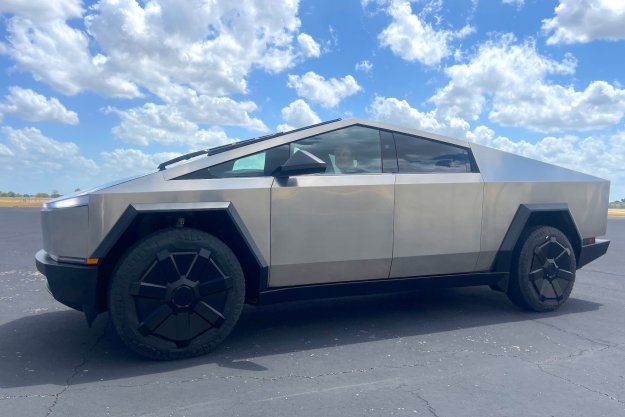
At the 2017 SEMA show, Fiat Chrysler Automobiles’ Mopar parts division announced that it would sell the Hellcat engine as a “crate motor,” meaning you can buy one and stick it in your next project car. Dubbed the “Hellcrate,” the engine makes the same 707 hp and 650 pound-feet of torque as the factory Hellcat models.
Because it’s a factory-fresh engine that literally runs perfectly right out of the box, a crate engine is a relatively straightforward way to get reliable power when building a custom car. All of the Detroit Three automakers already offer crate engines, usually big V8s like the Hellcat engine. Honda will even offer the Civic Type R’s 2.0-liter turbocharged four-cylinder as a crate engine.
The Hellcrate engine comes with all of the electronics needed to make it run. That includes a powertrain control module, power distribution center, engine wiring harness, chassis wiring harness, ground jumper, oxygen sensors, charge air temperature sensors, fuel pump control module, and even an accelerator pedal. Modern engines sure are complicated.
In addition to the electronics, Mopar provides a front-end accessory drive kit with all of the belts and pulleys you’d find on a factory engine, as well as an alternator and power-steering pump. The setup is intended for pre-1976 vehicles with manual transmissions, which makes sense. As much as we’d love to see someone install one in, say, a Dodge Magnum, the additional electronic systems in more modern vehicles might complicate the installation.
The Hellcrate engine still creates lots of possibilities for upgrading older cars with modern power. At SEMA, Mopar will display a 1970 Plymouth Superbird replica sporting the new crate engine. It will also show off a 1968 Plymouth GTX and 1937 Dodge pickup truck featuring its smaller 6.4-liter and 5.7-liter naturally aspirated Hemi V8 crate engines, respectively.
For car enthusiasts who aren’t concerned with originality, it’s hard to argue with an engine that makes 707 hp right out of the box. But that power doesn’t come cheap: the engine itself retails for $19,530, while the accessory kit needed to install it costs an extra $2,195. If that sounds reasonable to you, the Hellcrate is available to order through Mopar’s website.


